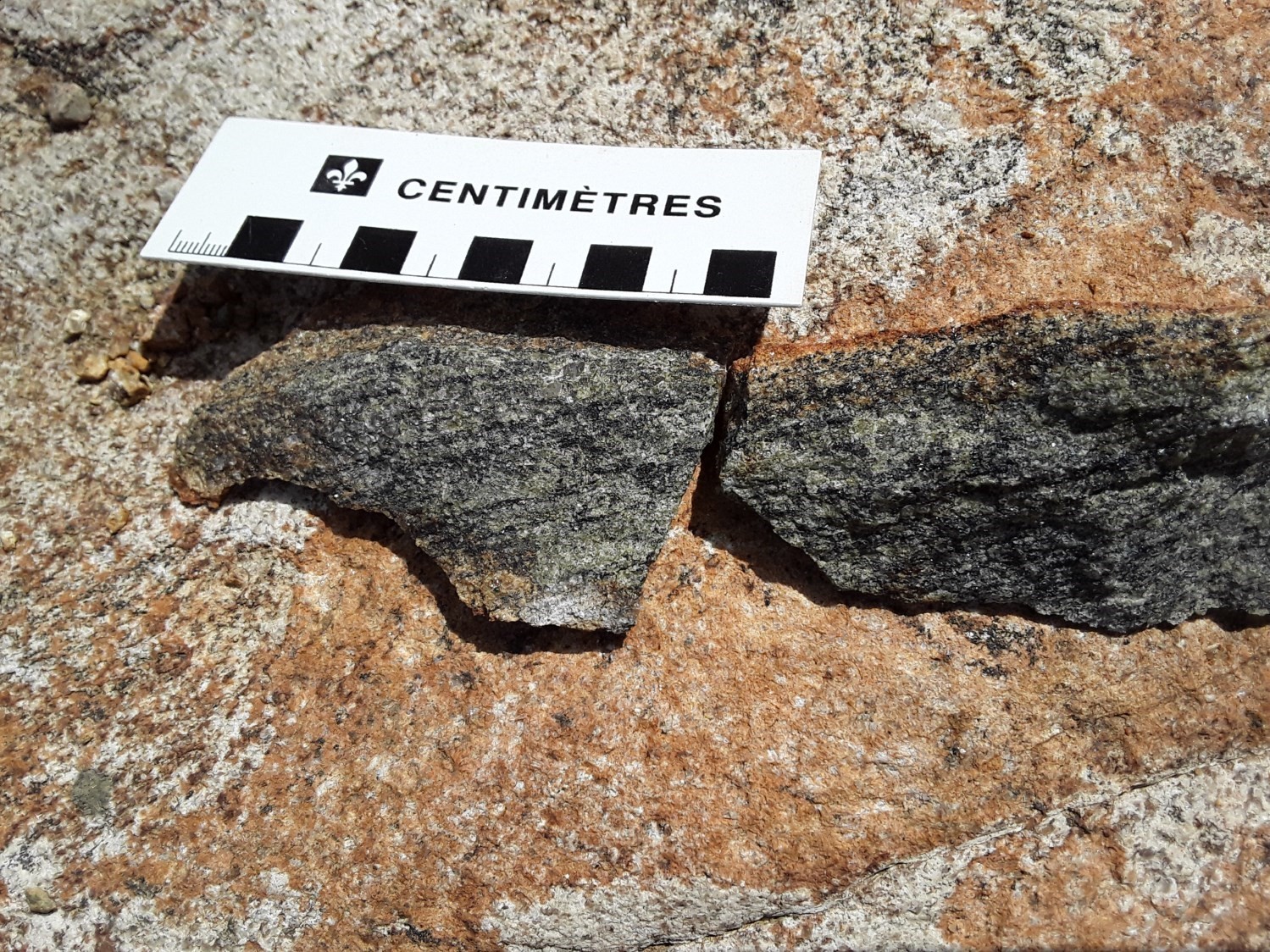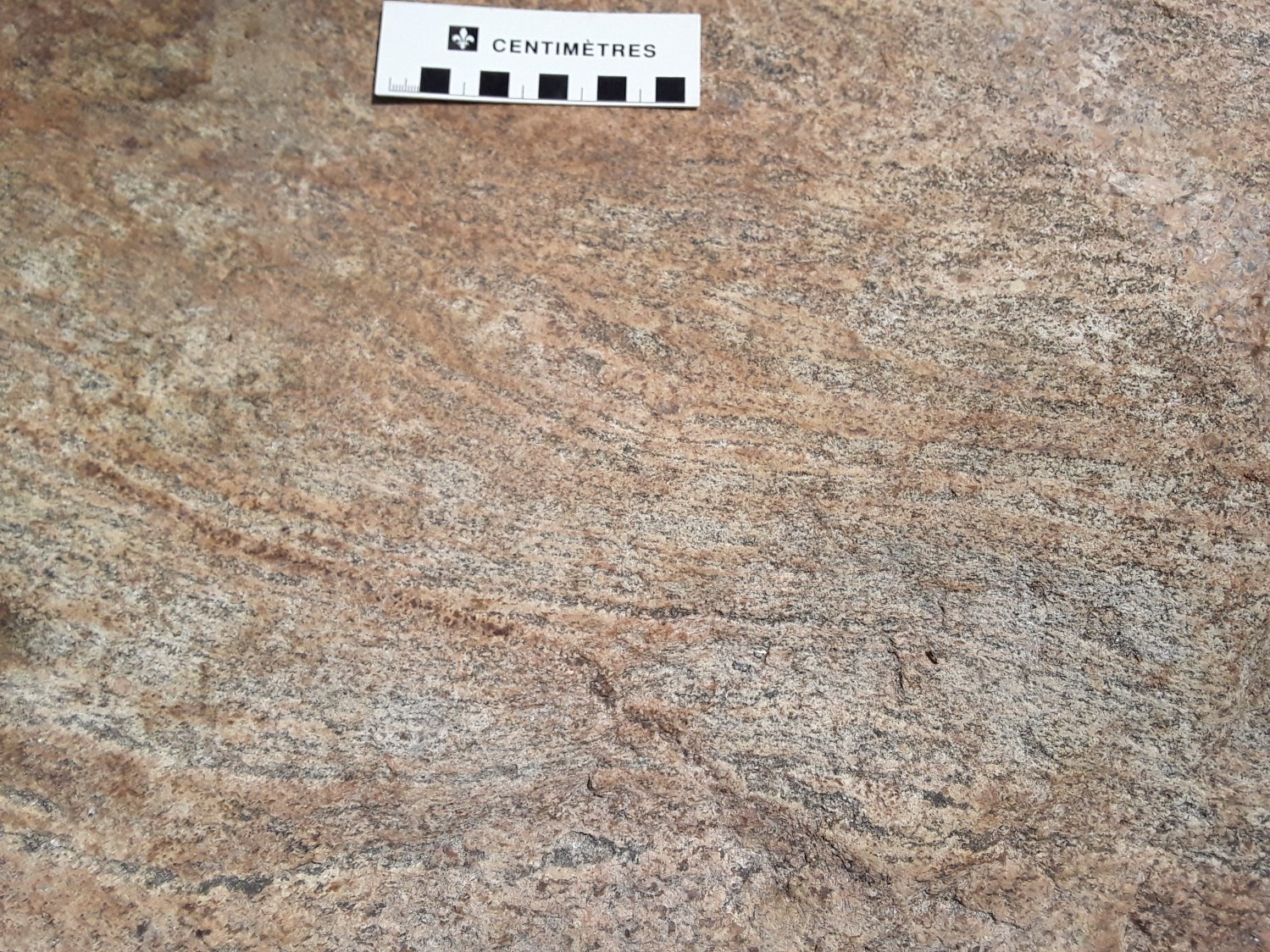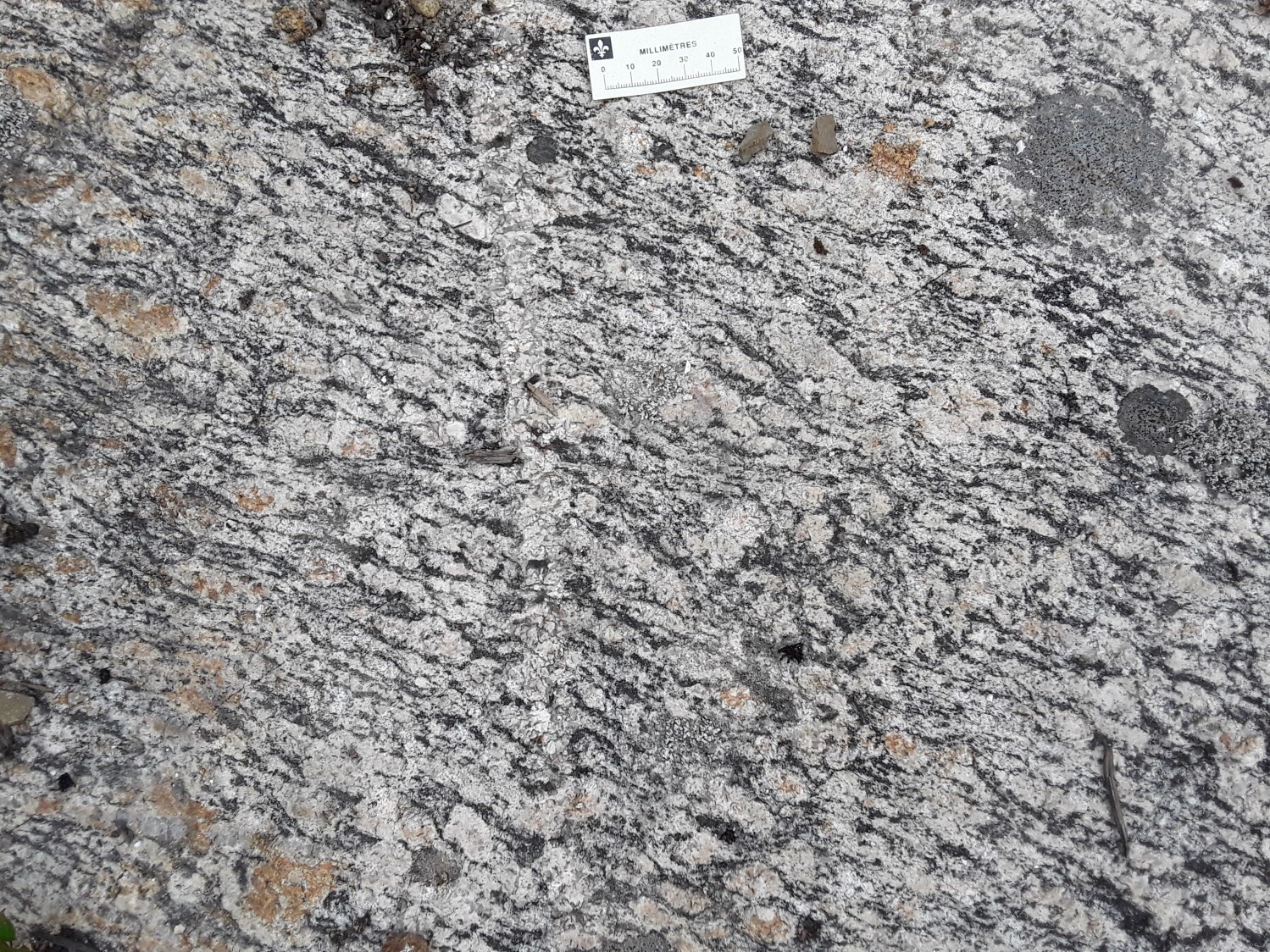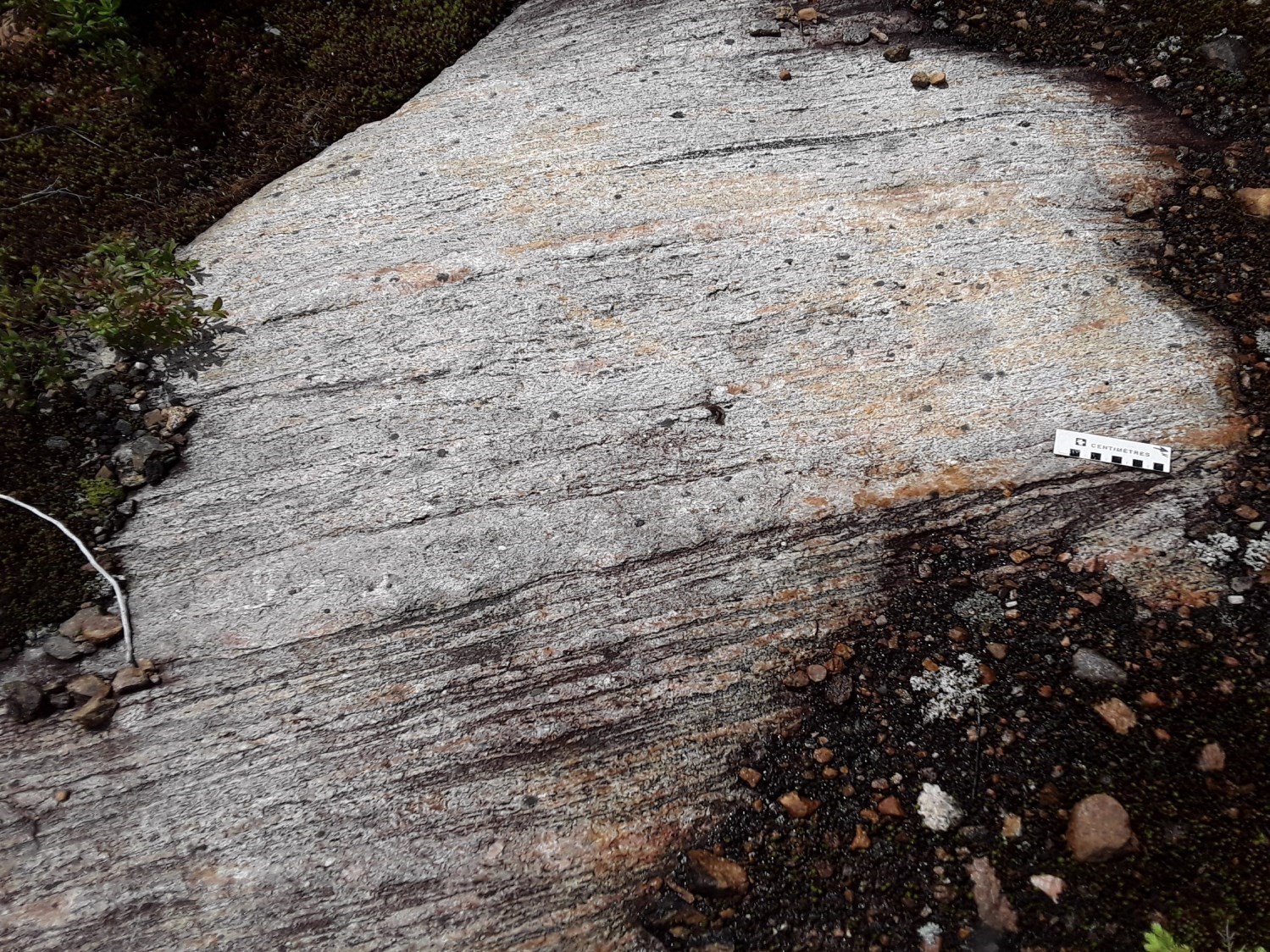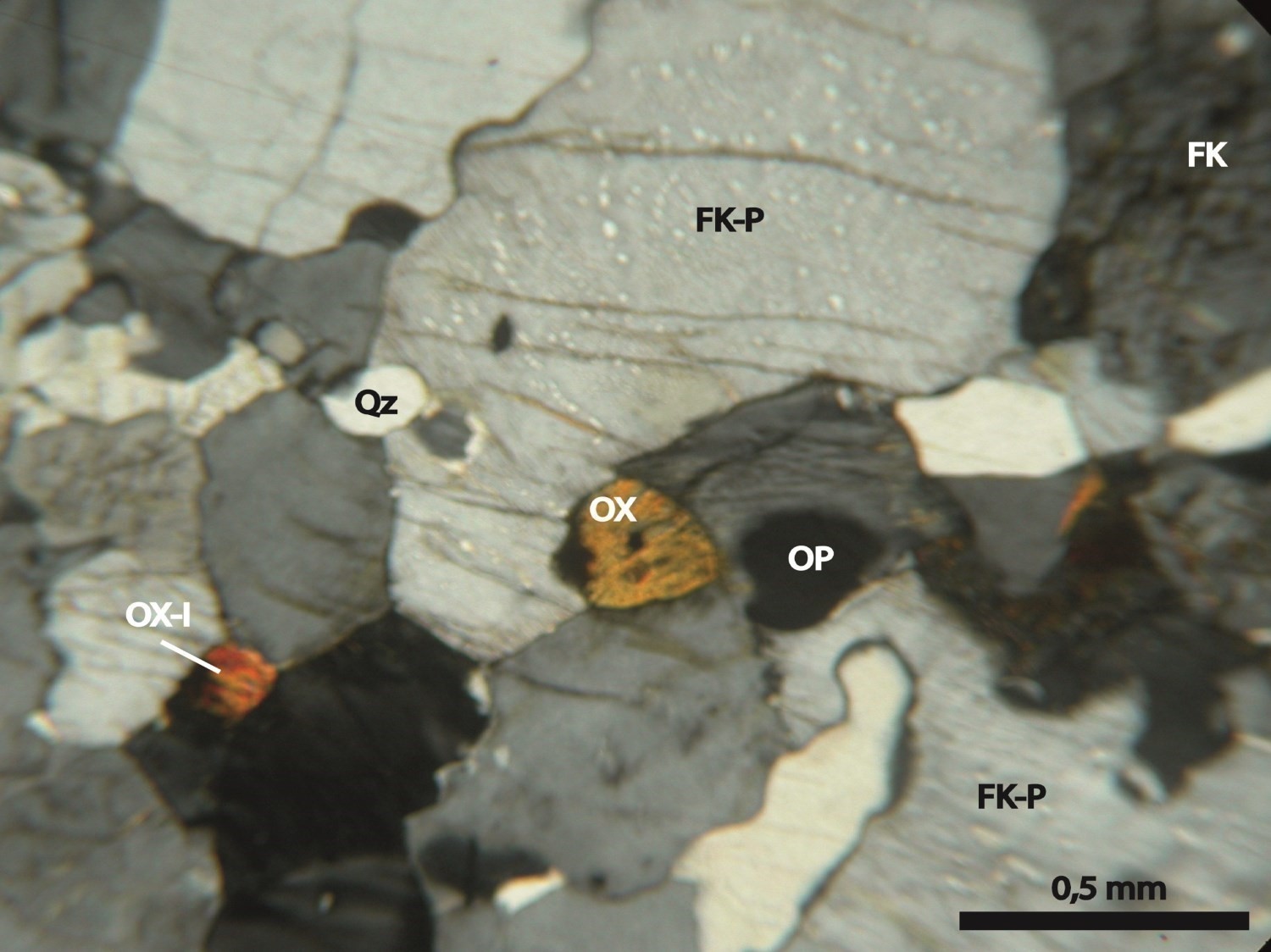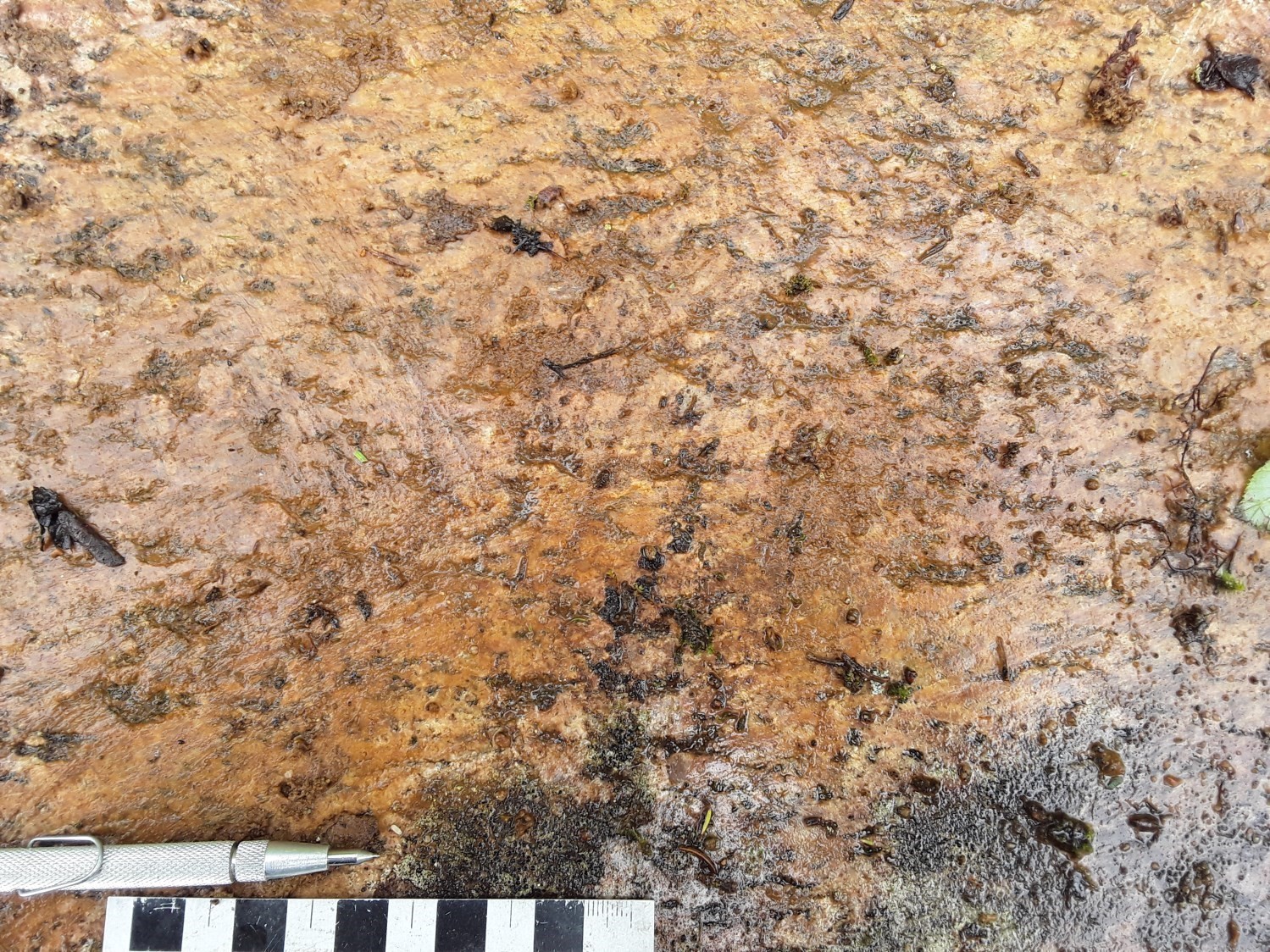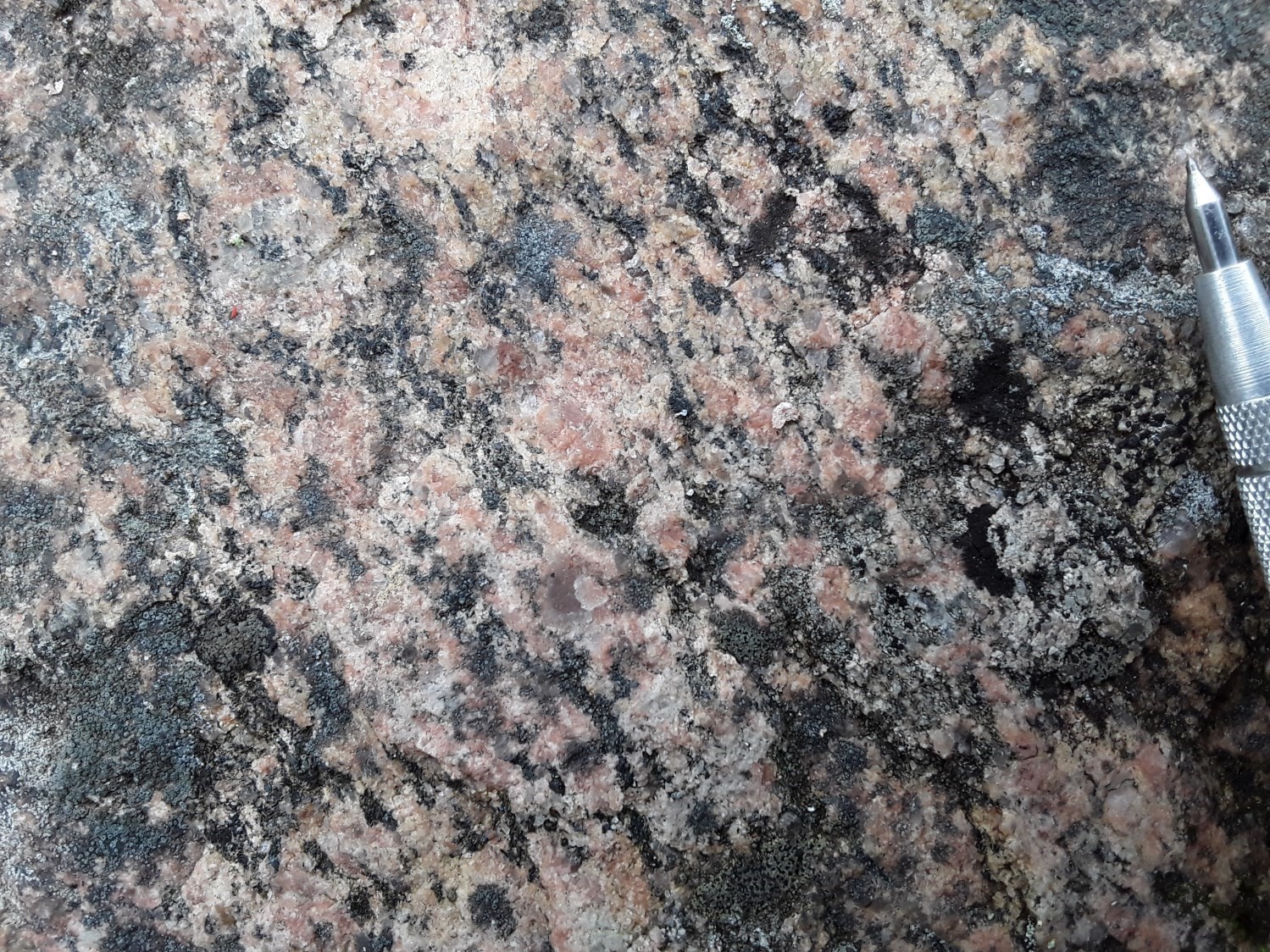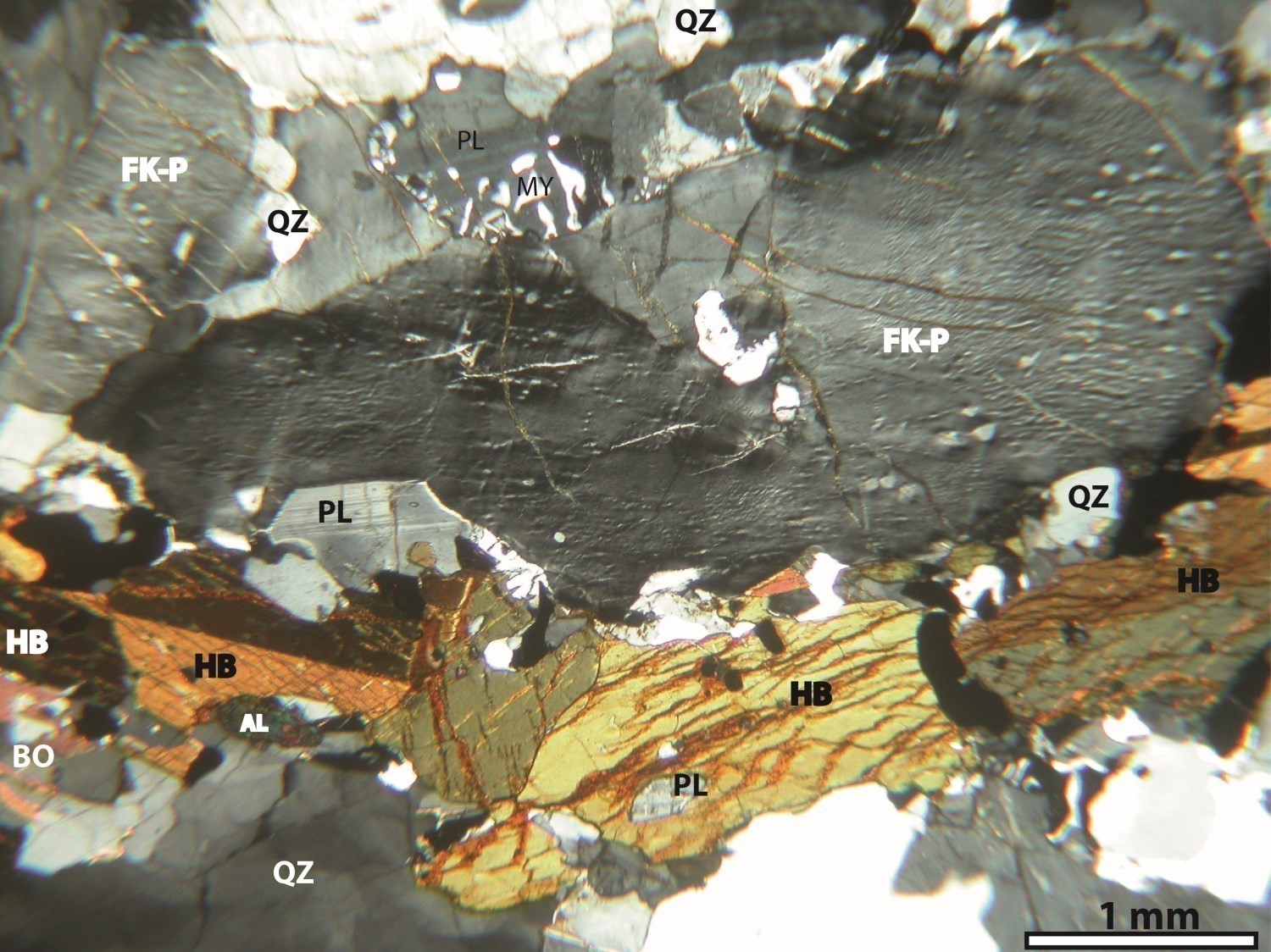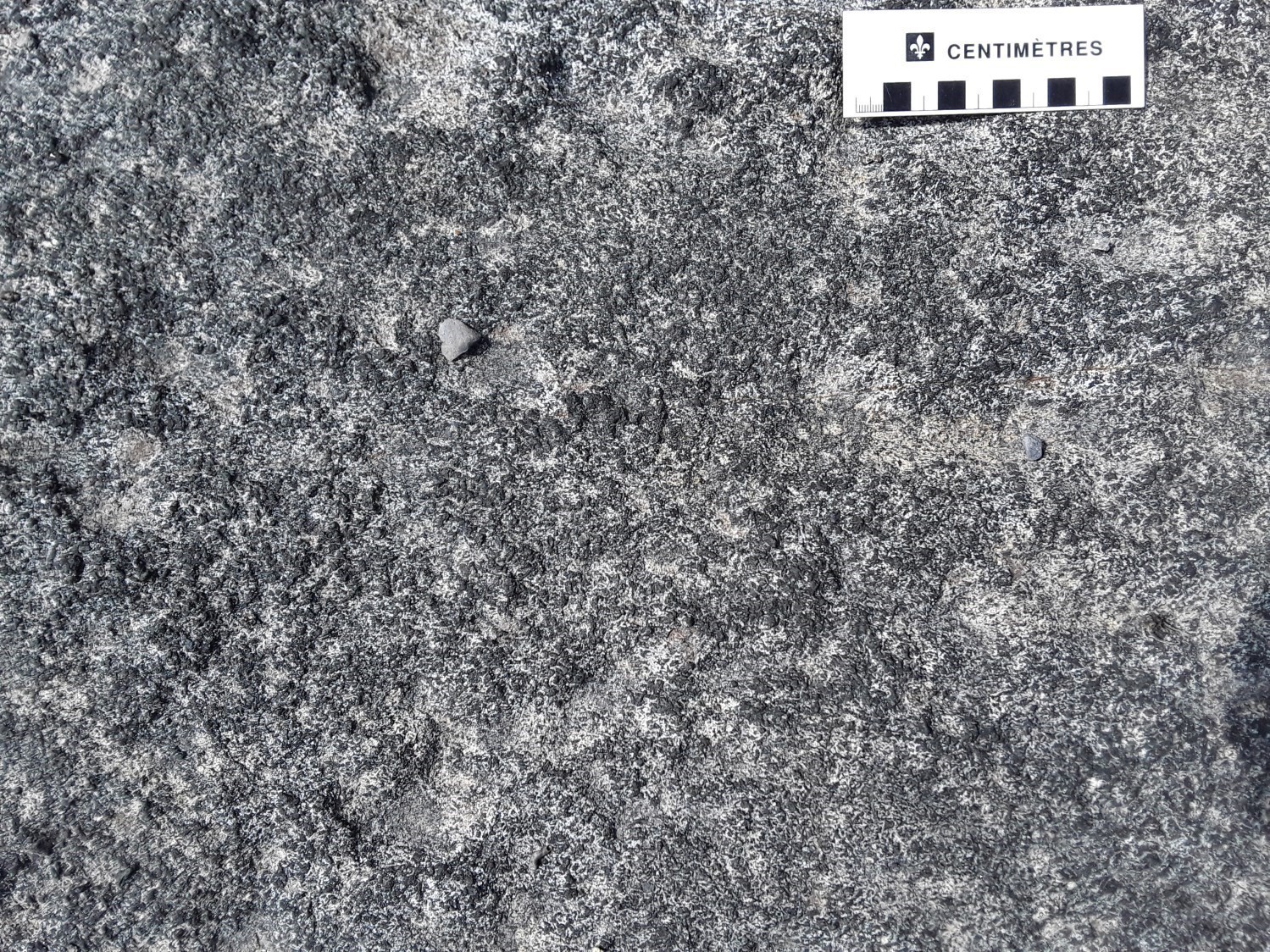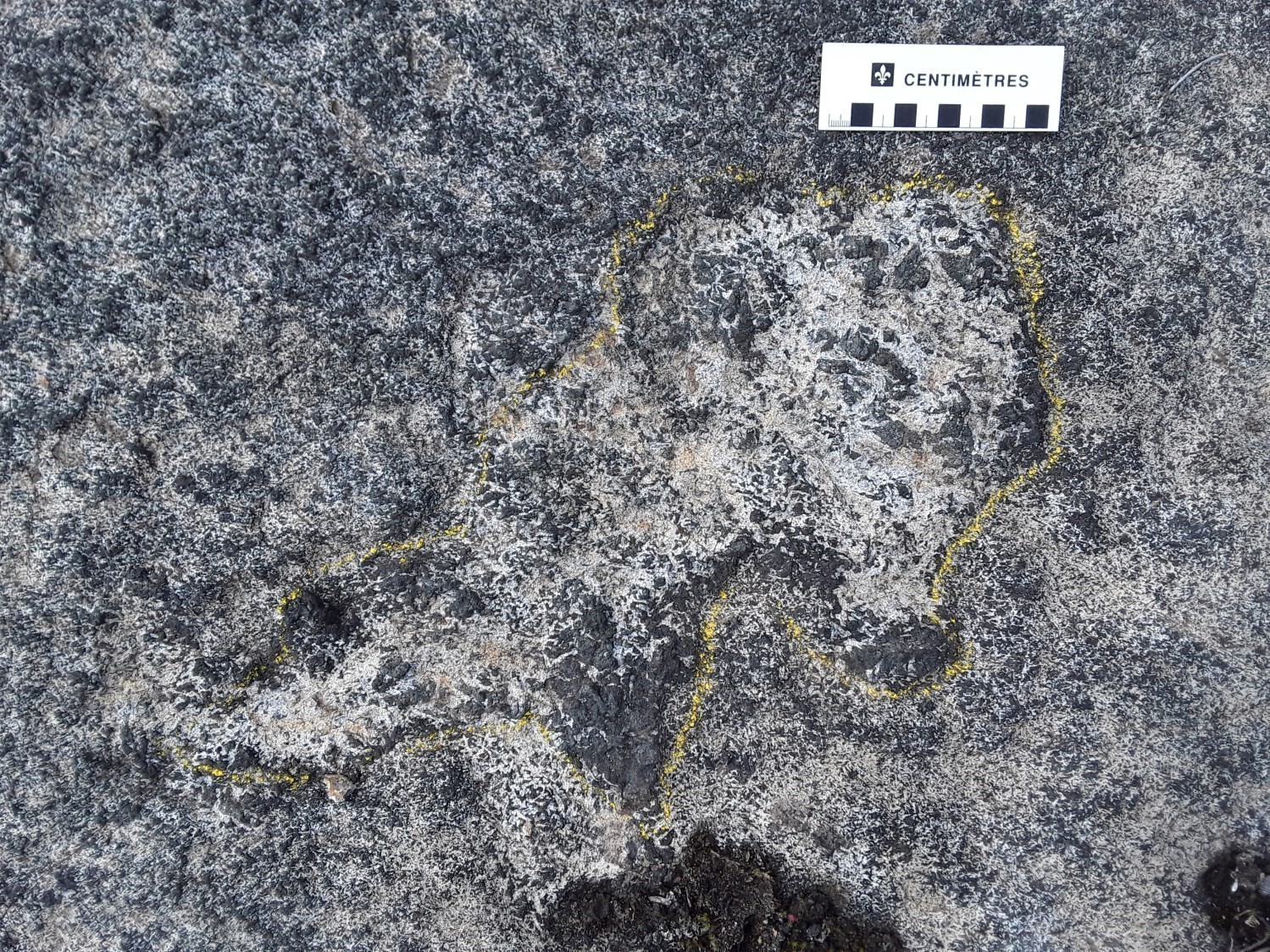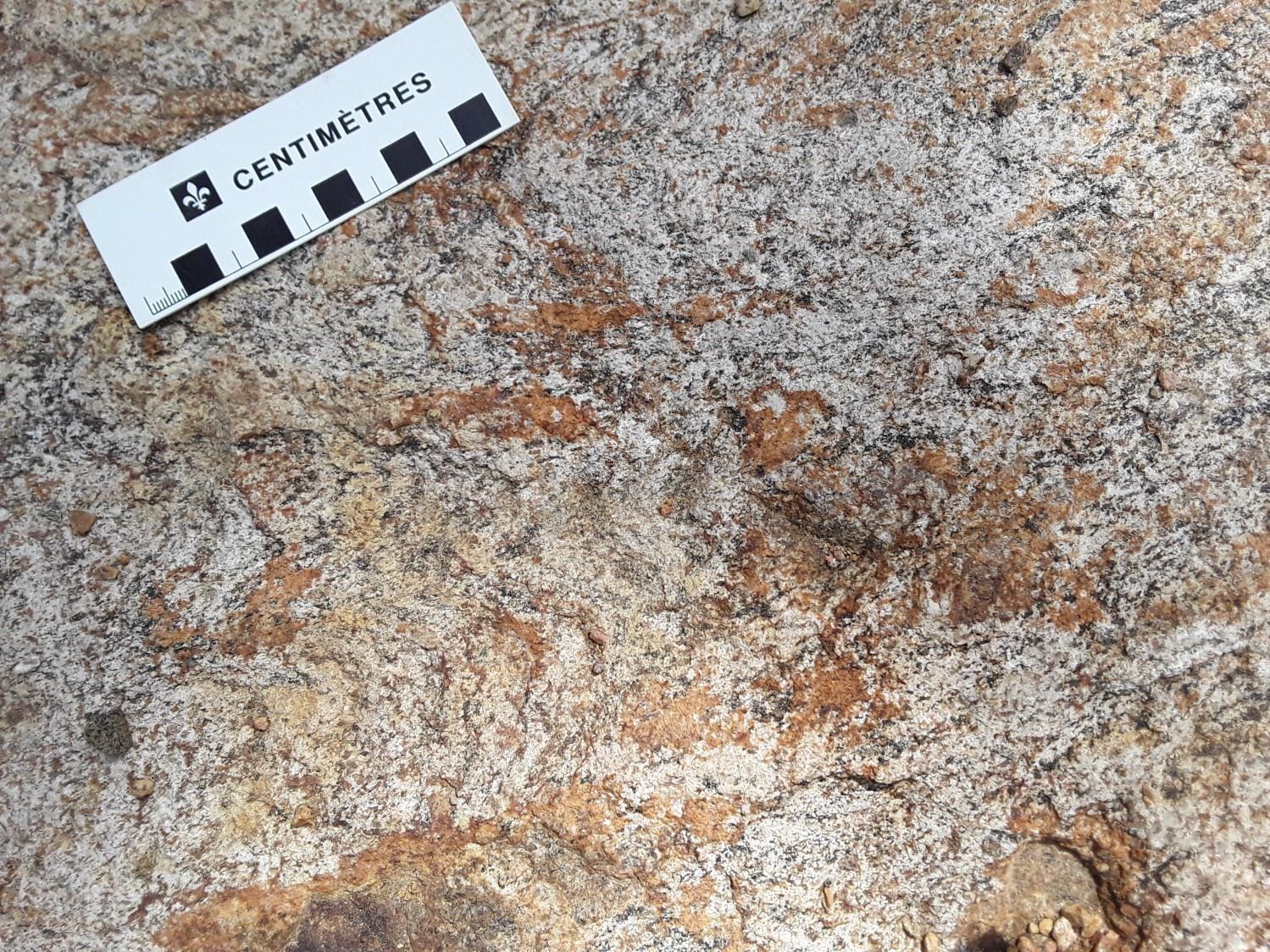
DISCLAIMER: This English version is translated from the original French. In case of any discrepancy, the French version shall prevail.
| Author(s): | Moukhsil and El Bourki, 2021 |
| Age: | Mesoproterozoic |
| Stratotype: | Reference outcrop 2020-AM-029 |
| Type area: | Area between Jean-Marie and Rognons lakes (NW part of NTS sheet 32H02) |
| Geological province: | Grenville Province |
| Geological subdivision: | Allochton |
| Lithology: | Felsic and intermediate intrusive rocks |
| Category: | Lithodemic |
| Rank: | Suite |
| Status: | Formal |
| Use: | Active |
None
Background
The Jean-Marie Intrusive Suite was defined during mapping by Moukhsil and El Bourki (2021) ~65 km NW of Lake Saint-Jean. This unit consists of several phases distributed in an intrusion well circumscribed from the aeromagnetic survey (Intissar and Benahmed, 2015).
Description
The Jean-Marie Intrusive Suite consists of a multiphase batholith composed of charnockite, alkali feldspar granite, hypersthene quartz syenite, syenogranite, gabbronorite and gabbro. It contains enclaves of paragneiss and granitic gneiss.
Charnockite is rusty brown in altered patina, greenish to greyish in fresh exposure and medium grained. The rock displays a planar fabric resulting from solid-state deformation, which is more important along the edge of the intrusion, where the rock also becomes granoblastic and fine grained. Some outcrops exhibit a porphyraceous to porphyroclastic texture (e.g. outcrop 2020-ME-1102). Charnockite contains hypersthene, clinopyroxene, quartz, K-feldspar, plagioclase, hornblende, biotite and accessory minerals such as apatite and zircon, accompanied by opaque minerals (magnetite and pyrite). Syenogranite resembles charnockite; however, all rocks of this type have <2% orthopyroxene.
Hypersthene quartz syenite varies in colour from one outcrop to another. It is whitish, pinkish, black or grey in altered patina and pink-beige in fresh exposure. The rock is coarse grained to locally porphyraceous and foliated. In the field, the orthopyroxene content varies from 5% to 8% and is associated with biotite, magnetite and clinopyroxene. In thin sections, the following minerals are also recognizable: polygonal quartz having undulatory extinction, K-feldspar phenocrystals, perthitic or not, plagioclase locally with myrmekitic symplectite, hornblende and some crystals of allanite. Accessory minerals are zircon and apatite.
Gabbronorite is grey-black in altered patina and fresh exposure. The rock is ophitic and medium to coarse grained. Gabbronorite contains ~1% leuconorite clusters white-grey in fresh or altered surfaces and medium to coarse-grained. Leuconorite clusters are 20 cm to 80 cm in diameter and display diffuse contact with gabbronorite, indicating their cogenetic character. A few outcrops of fine to medium-grained gabbro have been mapped among gabbronorite, and gabbro mainly occurs as centimetric dykes.
Gabbronorite contains orthopyroxene, altered clinopyroxene (augite), green hornblende, biotite, apatite and opaque minerals (magnetite, pyrite). Leuconorite clusters contain plagioclase and orthopyroxene. Both lithologies have magmatic textures and are intruded by charnockite of the same suite. Locally, gabbronorite intrudes charnockite. This seems to indicate the cogenetic character, without mixing, of the two magmas (gabbronoritic and granitic) emplaced at medium and high pressure (presence of magmatic orthopyroxene in both lithologies).
Gabbronorite and gabbro layers in this unit may contain Fe-Ti oxides with some phosphorus and vanadium. They mainly contain hemo-ilmenite 1 mm to 1.5 mm in size. Geochemical analysis returned contents of up to 31.20% Fe2O3 and 5.73% TiO2 (analysis 2020079554). Oxide-enriched gabbronorite can be classified as OAGN (OAGN = Oxide-Apatite-Gabbronorite, acronym proposed by Dymeck and Owens, 2001) with or without apatite. The texture of OAGN is granular. It contains hemo-ilmenite disseminated or concentrated in bands and millimetric to centimetric layers. Bands are then composed of plagioclase, pyroxenes, biotite, hornblende, hemo-ilmenite, ilmenite, magnetite and some apatite.
Thickness and distribution
The Jean-Marie Intrusive Suite consists of a multiphase intrusion mapped in the NW part of sheet 32H02. Interpretation of aeromagnetic maps has allowed extending it to the west (sheet 32H03) and to the north (sheets 32H06 and 32H07). This interpretation gives it an elliptical shape with a long axis of 30 km, oriented N-S, and a short axis of ~7 km oriented E-W.
Dating
None.
Stratigraphic Relationship(s)
The Jean-Marie Intrusive Suite is in fault contact with the Bolduc Intrusive Suite and the Barrois Complex. It contains enclaves and klippes of paragneiss and granitic gneiss of this complex. It is also cut by millimetric to centimetric dykes of granitic pegmatite and by granitic-filled veins and veinlets.
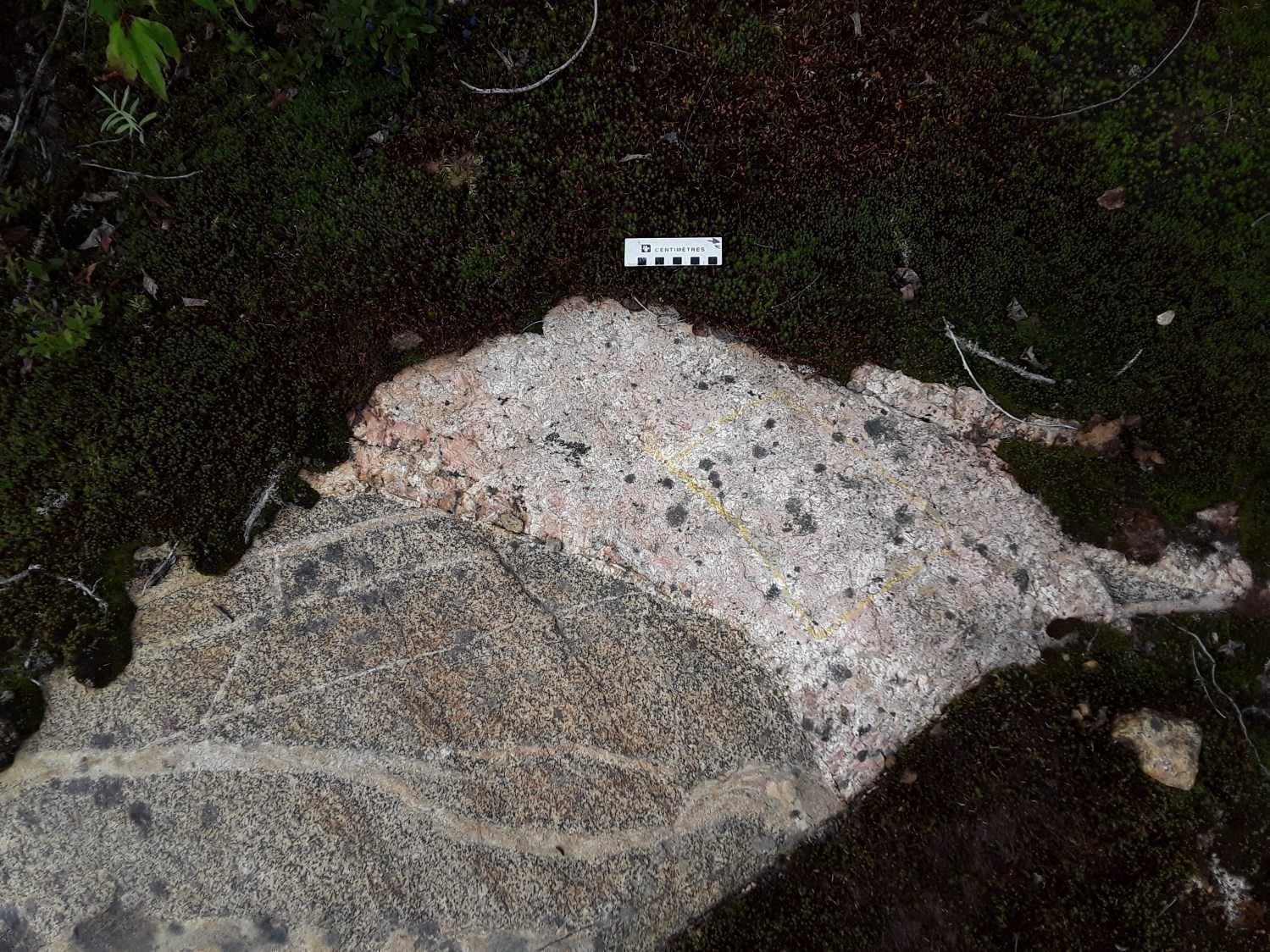
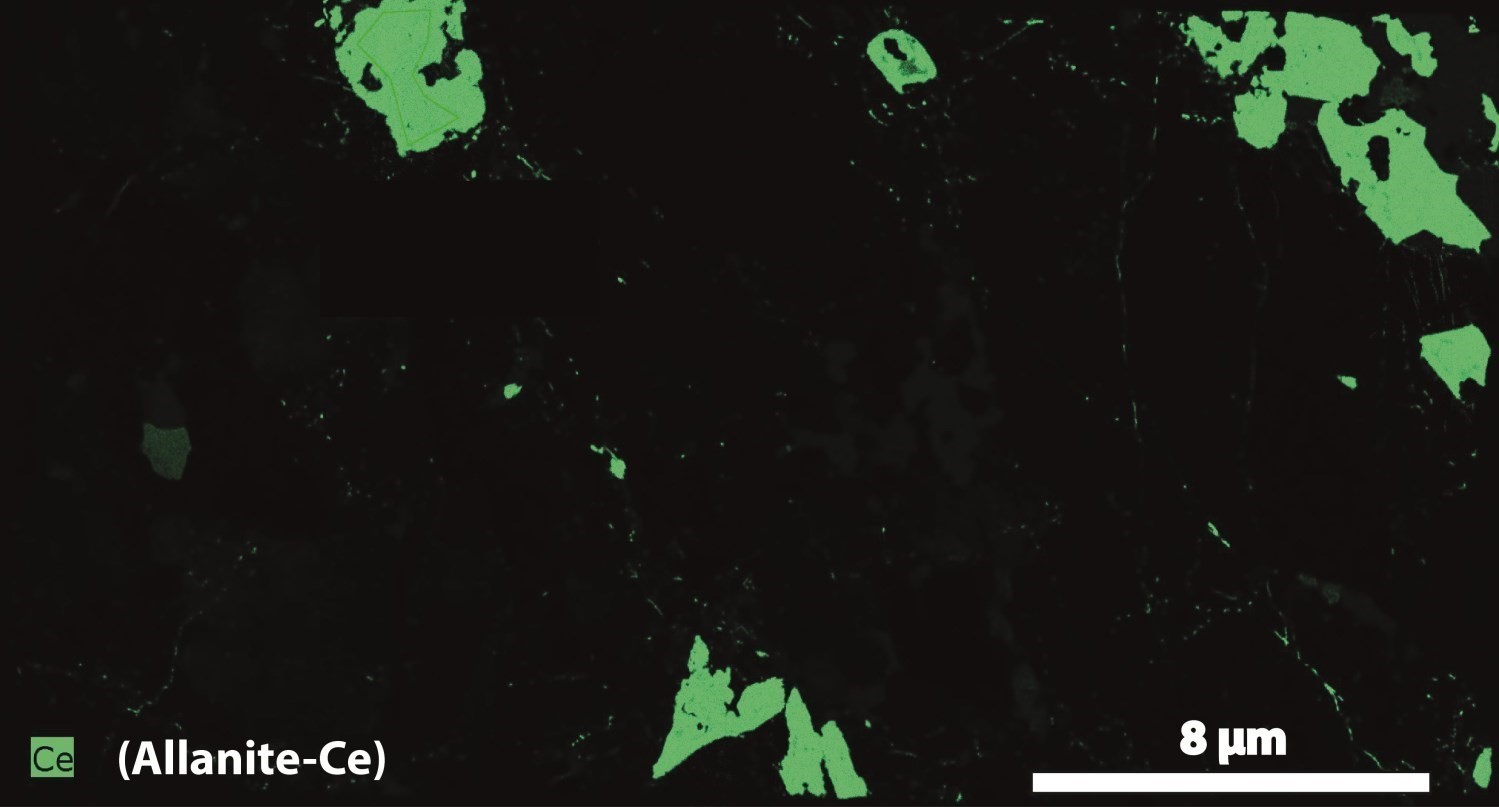 A 5 cm to 20 cm-thick syenitic pegmatite dyke cuts the Jean-Marie intrusive suite (sample 2020-ME-1087-C). The dyke hosts a rare earth element mineralized zone (analysis 2020079504) enriched in allanite (Jeb mineralized zone).
A 5 cm to 20 cm-thick syenitic pegmatite dyke cuts the Jean-Marie intrusive suite (sample 2020-ME-1087-C). The dyke hosts a rare earth element mineralized zone (analysis 2020079504) enriched in allanite (Jeb mineralized zone).
Paleontology
Does not apply.
References
Publications Available Through SIGÉOM Examine
INTISSAR, R., BENAHMED, S. 2015. Levé magnétique aéroporté dans le secteur ouest du Lac-St-Jean, Province de Grenville. MERN, GOLDAK AIRBORNE SURVEYS. DP 2015-06, 7 pages and 2 plans.
MOUKHSIL, A., EL BOURKI, M. 2021. Géologie de la région de Girardville, Province de Grenville, région du Saguenay – Lac-Saint-Jean, Québec, Canada. MERN. BG 2021-02, 1 plan.
Other Publications
DYMEK, R.F., OWENS, B.E., 2001. Petrogenesis of Apatite-rich rocks (nelsonite and oxide-apatite gabbronorite) associated with massif anorthosites. Economic Geology; volume 96, pages 797-815. doi.org/10.2113/gsecongeo.96.4.797
Suggested Citation
Ministère de l’Énergie et des Ressources naturelles (MERN). Jean-Marie Intrusive Suite. Quebec Stratigraphic Lexicon. https://gq.mines.gouv.qc.ca/lexique-stratigraphique/province-de-grenville/suite-intrusive-de-jean-marie_en [accessed on Day Month Year].
Contributors
|
First publication |
Abdelali Moukhsil, P. Geo., Ph.D. abdelali.moukhsil@mern.gouv.qc.ca; Mhamed El Bourki, GIT., M.Sc. mhamed.elbourki@mern.gouv.qc.ca (redaction) Mehdi A. Guemache, P. Geo., Ph.D. (coordination); Fabien Solgadi, P. Geo., Ph.D. (critical review); Simon Auclair, P. Geo., M.Sc. (editing); Céline Dupuis, P. Geo., Ph.D. (English version); André Tremblay (HTML editing). |


